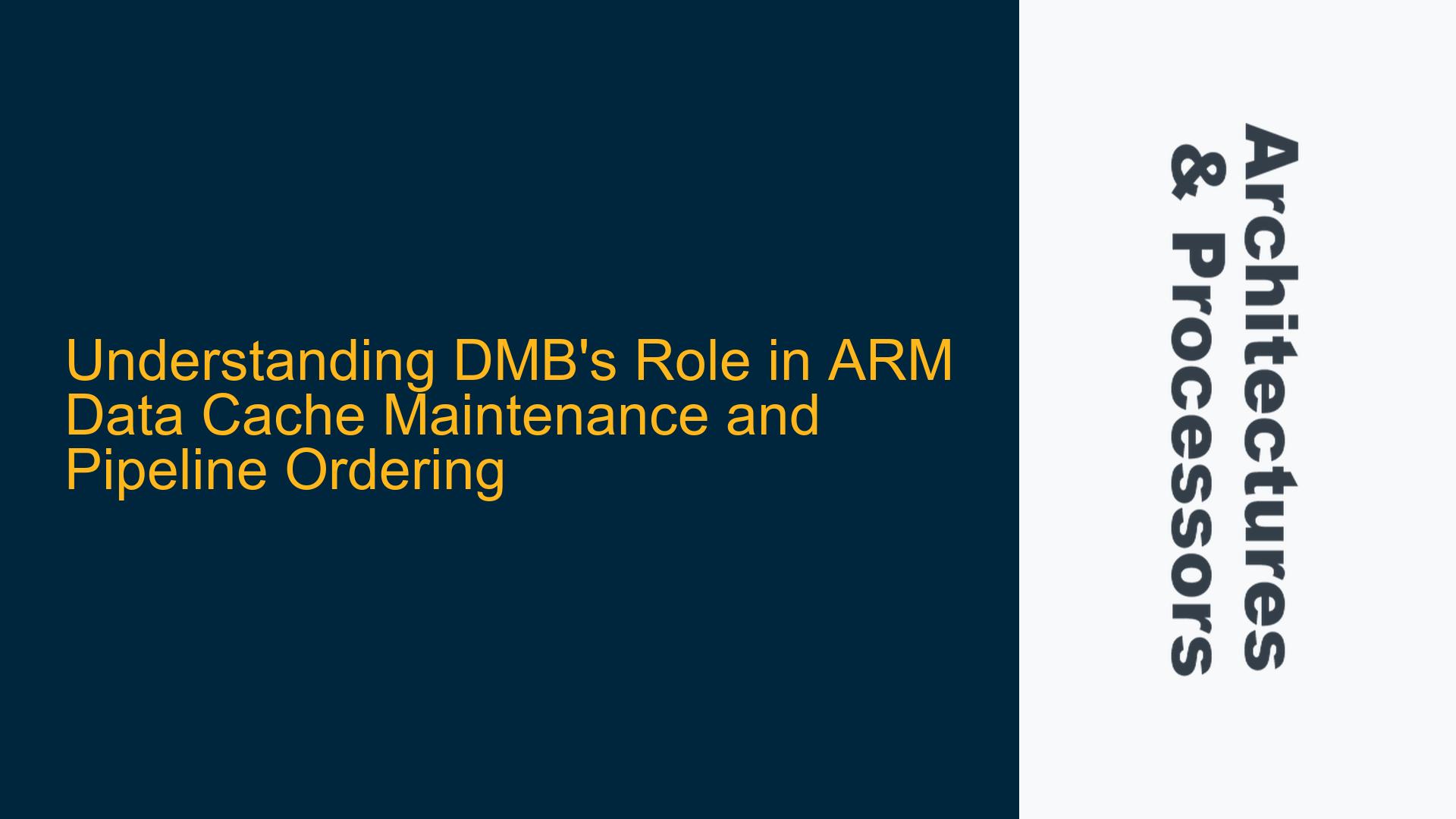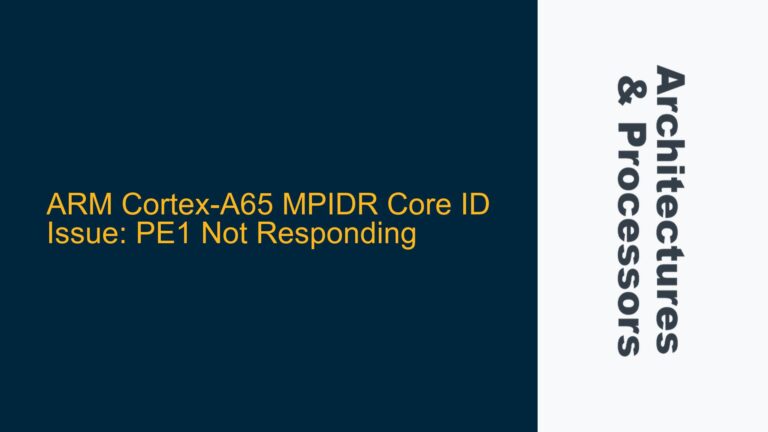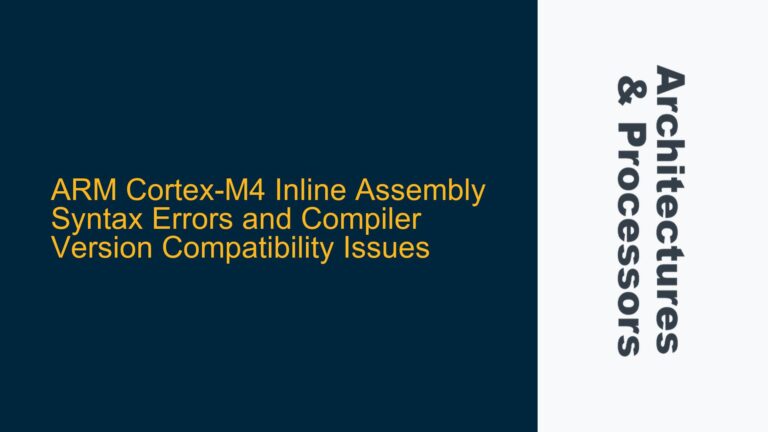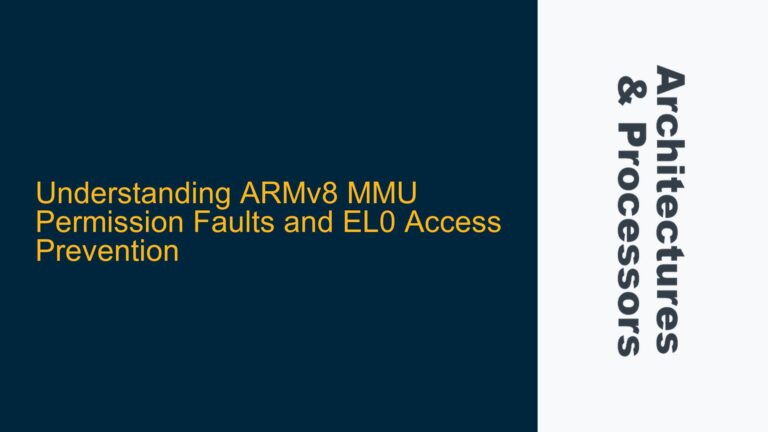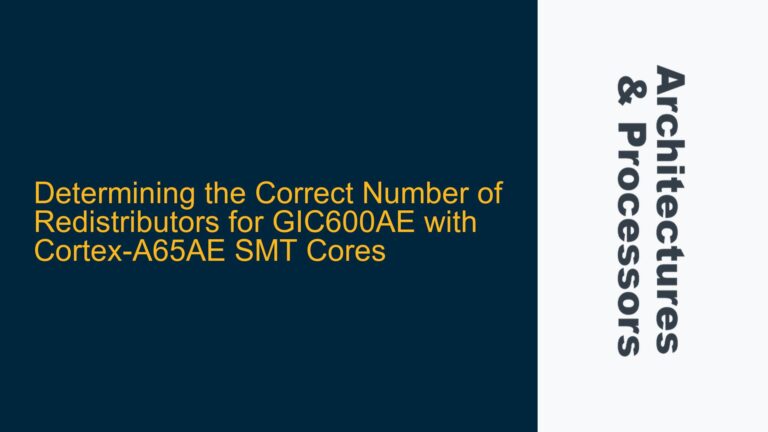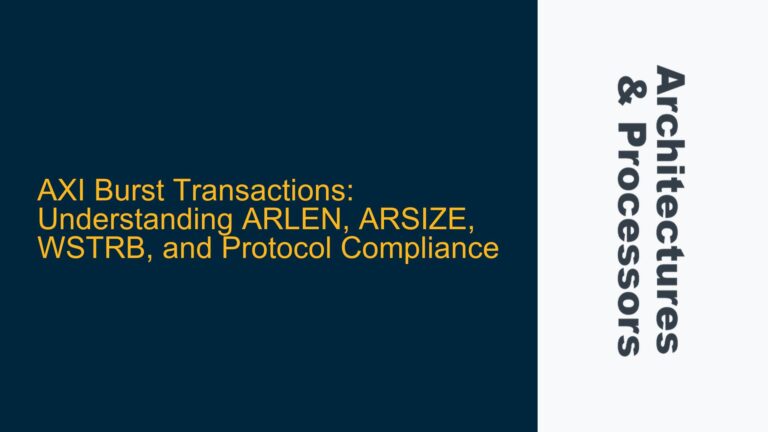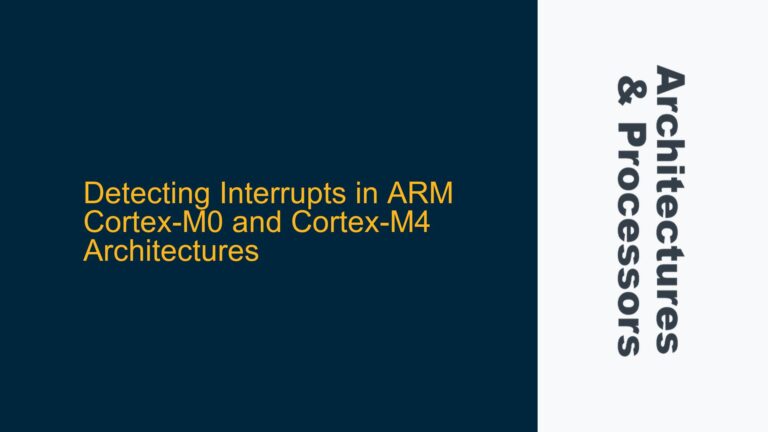DMB’s Role in Ensuring Relative Order and Cache Maintenance Completion
The Data Memory Barrier (DMB) instruction in ARM architectures plays a critical role in ensuring the relative order of memory accesses and cache maintenance operations. However, there is often confusion about whether DMB can also ensure the completion of these operations before subsequent data accesses are executed. According to the ARM documentation, DMB ensures that any explicit preceding data or unified cache maintenance operations have completed before any subsequent data accesses are executed. This statement, while somewhat simplified, is rooted in the practical implementation of DMB in ARM processors.
DMB operates by creating a barrier that prevents reordering of memory accesses across the barrier. This means that all memory accesses before the DMB instruction will be completed before any memory accesses after the DMB instruction are executed. However, DMB does not guarantee that the cache maintenance operations themselves have fully completed; it only ensures that the order of these operations relative to other memory accesses is maintained. This distinction is crucial for understanding the limitations and appropriate use cases of DMB in ARM systems.
In practice, the ARM architecture allows for some flexibility in how DMB is implemented. For example, when dealing with cache maintenance operations such as clean and invalidate, DMB can be sufficient to ensure that the effects of these operations are observed in the correct order. However, this does not necessarily mean that the cache maintenance operations have fully completed. The ARM architecture does not specify the exact mechanism by which this ordering is achieved, leaving it up to the implementation of the processor.
Memory Barrier Omission and Cache Invalidation Timing
One of the key issues that arise when using DMB is the potential omission of memory barriers in scenarios where strict ordering is required. This can lead to subtle bugs, especially in systems with multiple cores or when dealing with DMA (Direct Memory Access) transfers. The timing of cache invalidation operations is particularly critical, as improper synchronization can result in stale data being accessed or incorrect data being written to memory.
In ARM systems, cache maintenance operations such as invalidate, clean, and clean-and-invalidate are used to manage the contents of the cache. These operations ensure that the cache is in a consistent state with respect to the main memory. However, the timing of these operations relative to other memory accesses is not always straightforward. For example, if a cache invalidate operation is performed without proper synchronization, it is possible for subsequent memory accesses to see stale data that was not properly invalidated.
The DMB instruction can help mitigate these issues by ensuring that the cache maintenance operations are performed in the correct order relative to other memory accesses. However, DMB alone is not always sufficient to guarantee that the cache maintenance operations have fully completed. In some cases, a Data Synchronization Barrier (DSB) may be required to ensure that all cache maintenance operations have completed before proceeding with subsequent instructions.
The ARM architecture provides several memory barrier instructions, including DMB, DSB, and ISB (Instruction Synchronization Barrier). Each of these instructions serves a different purpose and is used in different scenarios. DMB is used to ensure the relative order of memory accesses, DSB is used to ensure that all memory accesses have completed before proceeding, and ISB is used to ensure that the instruction pipeline is flushed and refilled with the correct instructions.
Implementing Data Synchronization Barriers and Cache Management
To properly manage cache maintenance operations and ensure correct memory ordering, it is essential to understand when to use DMB, DSB, and ISB. The following sections provide detailed guidance on how to implement these barriers in ARM systems.
Using DMB for Cache Maintenance Operations
When performing cache maintenance operations such as clean or invalidate, DMB can be used to ensure that these operations are performed in the correct order relative to other memory accesses. For example, consider the following sequence of instructions:
LDR R0, [R1] ; Load data from memory
DMB ; Data Memory Barrier
DC CIVAC, R0 ; Clean and Invalidate data cache by VA to PoC
DMB ; Data Memory Barrier
STR R0, [R2] ; Store data to memory
In this example, the first DMB ensures that the load operation (LDR) is completed before the cache maintenance operation (DC CIVAC) is performed. The second DMB ensures that the cache maintenance operation is completed before the store operation (STR) is performed. This sequence ensures that the cache is in a consistent state with respect to the main memory before and after the cache maintenance operation.
However, it is important to note that DMB does not guarantee that the cache maintenance operation has fully completed. It only ensures that the order of the operations is maintained. In some cases, it may be necessary to use a DSB to ensure that the cache maintenance operation has fully completed before proceeding with subsequent instructions.
Using DSB for Cache Maintenance Completion
In scenarios where it is critical to ensure that cache maintenance operations have fully completed before proceeding, a DSB should be used instead of or in addition to DMB. For example, consider the following sequence of instructions:
LDR R0, [R1] ; Load data from memory
DMB ; Data Memory Barrier
DC CIVAC, R0 ; Clean and Invalidate data cache by VA to PoC
DSB ; Data Synchronization Barrier
STR R0, [R2] ; Store data to memory
In this example, the DSB ensures that the cache maintenance operation (DC CIVAC) has fully completed before the store operation (STR) is performed. This is particularly important in scenarios where the cache maintenance operation must be fully completed before proceeding, such as when preparing memory for DMA transfers or when switching between different memory maps.
Using ISB for Instruction Pipeline Synchronization
In some cases, it may be necessary to ensure that the instruction pipeline is flushed and refilled with the correct instructions after performing cache maintenance operations. This can be achieved using the ISB instruction. For example, consider the following sequence of instructions:
LDR R0, [R1] ; Load data from memory
DMB ; Data Memory Barrier
DC CIVAC, R0 ; Clean and Invalidate data cache by VA to PoC
DSB ; Data Synchronization Barrier
ISB ; Instruction Synchronization Barrier
STR R0, [R2] ; Store data to memory
In this example, the ISB ensures that the instruction pipeline is flushed and refilled with the correct instructions after the cache maintenance operation (DC CIVAC) has been performed. This is particularly important in scenarios where the cache maintenance operation affects the instructions that are being executed, such as when modifying code in memory or when switching between different execution contexts.
Practical Considerations for Cache Management
When implementing cache management in ARM systems, it is important to consider the specific requirements of the application and the characteristics of the processor being used. The following table provides a summary of the key considerations for using DMB, DSB, and ISB in different scenarios:
| Scenario | DMB Required | DSB Required | ISB Required | Notes |
|---|---|---|---|---|
| Cache Clean/Invalidate | Yes | No | No | DMB ensures correct order of operations |
| Cache Clean/Invalidate with DMA | Yes | Yes | No | DSB ensures cache operations are completed before DMA transfer |
| Code Modification | Yes | Yes | Yes | ISB ensures instruction pipeline is flushed after code modification |
| Context Switching | Yes | Yes | Yes | ISB ensures correct instructions are fetched after context switch |
In addition to the
